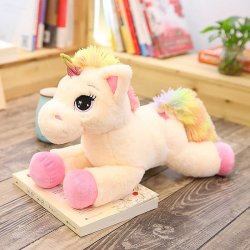find out how to develop and care for polka dot plant

Heat temperatures and humidity are key to rising polka dot plants. Anticipate to water often unless you get enough rainfall. Polka dot plants bloom sporadically, sometimes through the summer time, with small lilac or pink-colored flowers on spikes. Pinch off these flower spikes to keep the plant’s power centered on rising its vibrant foliage. Polka dot plants have turn out to be a problematic, aggressive grower in Queensland and New South Wales, Australia. This plant additionally wants common feeding all through the spring to fall growing season. Within the U.S., it isn't invasive and is safe to plant in-floor. In the U.S., it is not invasive and is safe to plant in-floor. Choose a planting site that's not in low light or too much gentle or else you possibly can expect the foliage colors to fade, lessening the plant's ornamental worth. When grown outdoors, polka dot plants like a spot with some shade. Bright, oblique gentle is good indoors, similar to from an east- or south-facing window. Polka dot plants prefer organically rich soil with good drainage. Mix in some pumice or perlite to improve soil drainage. An all-goal organic potting combine is typically suitable for these plants. Keep away from letting the soil completely dry out, which can cause the foliage to wilt and make the plant wrestle to survive. These plants like a reasonable amount of moisture in the soil always. Water the plant when the highest half-inch of soil has dried out. Give sufficient water to moisten the soil evenly. By no means let the soil turn into soggy, which may cause root rot and kill the plant. You will need to water container plants extra incessantly than in-floor plants. Barely cut back watering in the winter and resume your routine once development picks up once more within the spring. These plants like humid conditions, preferring a minimum humidity level of fifty %. Polka dot plants are only hardy in USDA rising zones 10 and 11, preferring temperatures over 60 levels F. They ought to be planted outdoors in the spring after the menace of frost has passed and introduced inside for those who plan to overwinter them properly before the primary frost of the fall. Feed container plants with an natural fertilizer designed for houseplants as soon as a month in the course of the warm rising season. When you need to raise the humidity, you possibly can mist your plant’s leaves or place its pot on a tray stuffed with pebbles and water so long as the bottom of the pot isn’t touching the water. These plants are heavy feeders. If planting in-ground, combine a layer of compost into the soil each spring. Within the main species, Hypoestes phyllostachya, there are a lot of varieties; all are bred for his or her leaf coloration. Polka dot plants are likely to get leggy. You’ll need a pair of fresh, sharp scissors or pruning shears to keep the plant from growing lengthy, lanky branches. To promote a bushier progress habit, lower or pinch again the highest two leaves on every stem weekly. Though flowers sound nice, it's best to clip them when they begin appearing to increase the rising season of your polka dot plant. The flowers aren't as ornamental as the leaves anyway. The plant will die off or enter dormancy once it has completed flowering. Actively trimming will help the plant to develop healthier and more vigorously. Polka dot plants will be grown from seeds or stem cuttings. If you are beginning from seeds, sow them in the early spring. You can propagate from cuttings anytime; nonetheless, your success price of rising a wholesome plant shall be best within the spring or summer season. Trimming your polka dot plant is a great way to keep up a bushier, healthier plant. If you live in a non-tropical climate, your polka dot plants will die as soon as the primary frost comes. If you discover your plant is dying outdoors, stem cutting is a great option to revive your plant indoors. Let's study the right way to propagate your polka dot plant from a stem cutting rooted in water or moist soil. 1. To propagate the polka dot plant utilizing stem cuttings, you will want a sterilized pair of scissors or shears. You will have a clear jar of water or a pot with a effectively-draining potting mix or peat moss. Optionally, you should use a rooting hormone. 2. Reduce a chunk of stem from any part of the plant but make sure you could have not less than a 2-inch piece. If rooting in soil, you'll need clear plastic wrap. A 4-inch piece is ideal. 3. If rooting in a jar of water, keep the water stage even by including water because it evaporates. It may well take large garden pots two weeks or several months before the root grows about 2 inches. Every different week, change the water entirely to inhibit bacterial or algae progress till the basis grows up to 2 inches long. 4. If rooting in the soil, place the contemporary-minimize end of your chopping into potting mix or peat moss and keep it evenly moist. 5. Cowl the reducing with clear plastic wrap till the stem develops leaves or other apparent progress. Optionally, you can place some rooting hormone on the recent-reduce finish before planting it about an inch deep within the soil to help the rooting process. It might take a number of weeks to several months. 6. To check if the reducing has set roots, gently tug at the chopping to see if it has give or if roots keep the stem rooted within the soil. Only transplant the chopping outdoors once the menace of frost is gone. 7. The plant's slicing is able to be repotted as soon as the reducing has established a number of inches of latest growth. Place the plant in a sunny location. Sow seeds on the surface of warm, moist soil. The seeds should sprout in a couple of days. Solely plant outdoors after the threat of frost is over. As soon as the seedling has grown several inches-often in a few weeks-it is able to transplant into a bigger container or plant outdoors. Its roots have nowhere to develop. If a plant outgrows its container, it becomes pot certain or root certain. A sure signal your plant has outgrown its pot is when the roots begin rising out of the drainage holes. The most effective time to repot a polka dot plant is within the spring after its dormant period. Gradually increase the plant's pot dimension. Too giant a pot encourages the roots to concentrate on growing below the soil line, which isn't good for the plant's upward growth. Since this plant is a tropical plant, it is not going to survive frosty weather. The brand new pot should not be greater than two inches wider and no more than two inches deeper than the previous pot. If kept outdoors in a container, carry these plants indoors to a partially sunny indoor spot. Before the first frost, you'll be able to reduce stems from the plant, root them indoors in a small potting container or jar of water. Within the spring, you may replant it within the garden after the threat of frost is over. Common pests that get pleasure from polka dot plants are mealybugs, aphids, and whiteflies. Typical diseases related to polka dot plants are root rot, leaf-spot diseases, and powdery mildew. Telltale signs of those bug infestations or illness include foliage that is discolored, leaves that have holes or otherwise appear unhealthy, and small bugs transferring on the plants. The shortening of daylight hours tells the plant that the rising season is coming to a close, encouraging its flower progress. Its small lilac or pink-coloured racemes or flower stalks are insignificant and not known for their scent or appearance. This plant flowers in late summer time or early fall. When flowers emerge, it triggers plant to begin to go dormant. So, normally if you'd like your plant to last longer, it's best to cut or clip off the flowers as they start forming. Listed below are the commonest issues and a few potential solutions. Curling leaves and fading leaf color are usually brought on by too much solar or too little. Polka dot plants are comparatively easy to develop when you get their growing circumstances proper. However, it must be kept out of hot, direct sunlight. Hypoestes phyllostachya needs bright, oblique gentle to maintain its coloration. If it is in a container, transfer it to a shadier spot. If it's in-ground, think about giving it some cover. Insufficient water and humidity can cause the polka dot plant's leaves to show brown or start drooping. Also, a lot sun can burn the leaves. Hard water and overfertilization are other causes for a polka dot plant's leaves turning brown. Overwatering causes yellowing of the plant's leaves. Modify your humidity or watering habits to see if you possibly can revive the plant. Overwatering may also lead to different severe problems like root rot and powdery mildew. If you notice leaves yellowing, cut back the amount of water you give the plant and ensure you're using potting soil with good drainage. Soggy soil causes the yellowing of the leaves and leaf drop. Polka dot plants are easy to keep up and propagate. Are polka dot plants straightforward to care for? How briskly does polka dot plant develop? It will probably typically be troublesome getting its growing situations good, however once established, it's normally good to go. These plants have a moderate development price, though they are inclined to get choosy with their growing circumstances and tend to slow down their progress fee if they aren't excellent. Polka dot plants often complete their life cycle within a yr. How lengthy can polka dot plant dwell? However, you may prolong their life by propagating stem cuttings at the tip of the growing season.



Ingen kommentarer endnu